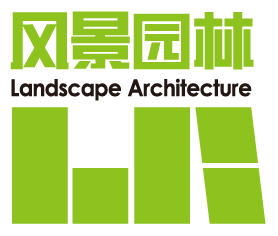Abstract:
Objective Expanding the coverage of territorial spatial planning to the whole territory and all elements provides an opportunity for the protection and development of historical heritage. The evolution of the cultural landscape of urban historical parks, an urban cultural heritage and an important territorial space, is a medium for the transformation, continuation and reconstruction of the modern city. Under the value orientation of the heritage protection system, strengthening the spatial connection and temporal order among heritage resources can cope with the dilemma of spatial homogenization and fragmentation of the cultural landscape.
Methods This research takes Xiamen Zhongshan Park (the “Park”) as an example for the interpretation and value assessment of the historical layering process. It constructs a cultural landscape heritage layering model of Xiamen Zhongshan Park by combining ancient literature and the spatial interpretation of ancient maps, and employing the historic urban landscape (HUL) method. By systematically analyzing the characters of the cultural landscape, the distribution patterns of the kernel density of cultural landscape, the layering pattern, and the dynamic superposition of cultural connotations in different periods, the research analyzes the dynamics of the layering evolution of the Park’s cultural landscape. Through expert scoring, the historical importance and cultural influence, artistic aesthetics, social leadership, development potential, and heritage survival status of the cultural landscape heritage of Xiamen Zhongshan Park are assessed, and the value attributes (mainly ontological and reuse values) of such cultural landscape heritage are interpreted by constructing an assessment system.
Results This research shows that the layering evolution of cultural landscape in Xiamen Zhongshan Park went through five periods. The initial construction in the germination period formed a preliminary cultural landscape layering space of memorial, natural and landscape scenery sources, as well as special gardens, with cultural scenery sources distributed in a concentrated pattern across the northern, central, and southern areas of the Park. During the destruction period, the development of Xiamen Zhongshan Park stagnated due to the strong force of political power. During the recovery period, the purpose of park construction was to restore the original appearance and maintain the original functions on the basis of adding public facilities of commemorative significance, in an attempt to enhance the Park’s landscape and educational nature. During the recession period, with only some natural and landscape scenery sources remaining, showing a layering state of accumulation in the north and disappearance in the south. During the revival period, the memorial scenery sources, scenic buildings, and special gardens showed a uniform distribution of layering. The spatial functions of cultural landscapes are diversified, forming a multi-integrated cultural landscape layering state.
By combing the characters of cultural landscape and the kernel density of cultural landscape distribution in different periods of the Park, the cultural landscape information of multiple periods is superimposed to generate a layering slicing map and a cultural connotation evolution map of the map. According to the results of the layering interpretation, five layering modes of recession, augmentation, juxtaposition, coverage, and regeneration of Xiamen Zhongshan Park are refined, and multiple layering modes are superimposed on each other in the continuous and dynamic evolution of the Park from the modern era to the present day. By retracing the evolution of the Park’s cultural landscape, the driving factors affecting the layering evolution of the Park’s cultural landscape are extracted. The location environment determines the Park’s landscape architecture, forming the initial state of the cultural landscape layering, the public’s demand influences the creation of space in the Park with the change of the times and thus affects the layering evolution, and the urban construction and social politics play a strong role in the layering of cultural landscape through relevant historical, economic, and political elements. In addition, the historical importance, cultural influence, artistic aesthetics, social leadership, and development potential of the Park’s scenic spots are significantly higher than their heritage survival status, which is related to the transformation of the elements in the cultural landscape layering model of Xiamen Zhongshan Park. In view of this, it is necessary to link the natural and cultural heritage resources in the Park, establish a systematic framework for interpreting the value of heritage, and revitalize the styles and features of historical landscapes.
Conclusion This research examines Xiamen Zhongshan Park as a living cultural landscape heritage, and explores the processes, patterns, and mechanisms of cultural landscape heritage superposition across different periods from a dynamic evolutionary perspective. By taking a holistic view of the Park’s heritage value and evolution, this research aims to establish an assessment system for assessing the values and identifying its defining characteristics of the Park’s cultural landscape heritage. The findings seek to inform strategies for the scientific management, comprehensive protection, and sustainable development of urban historical parks. Xiamen Zhongshan Park is not only a historical cultural artifact but also a symbol of urban heritage and modern identity. Analyzing the mechanisms of cultural landscape characterization and value assessment from the perspective of temporal accumulation offers a comprehensive approach to preserving value continuity and supporting the organic renewal of this historic park, bridging territorial spatial planning with heritage preservation.

 下载:
下载:
